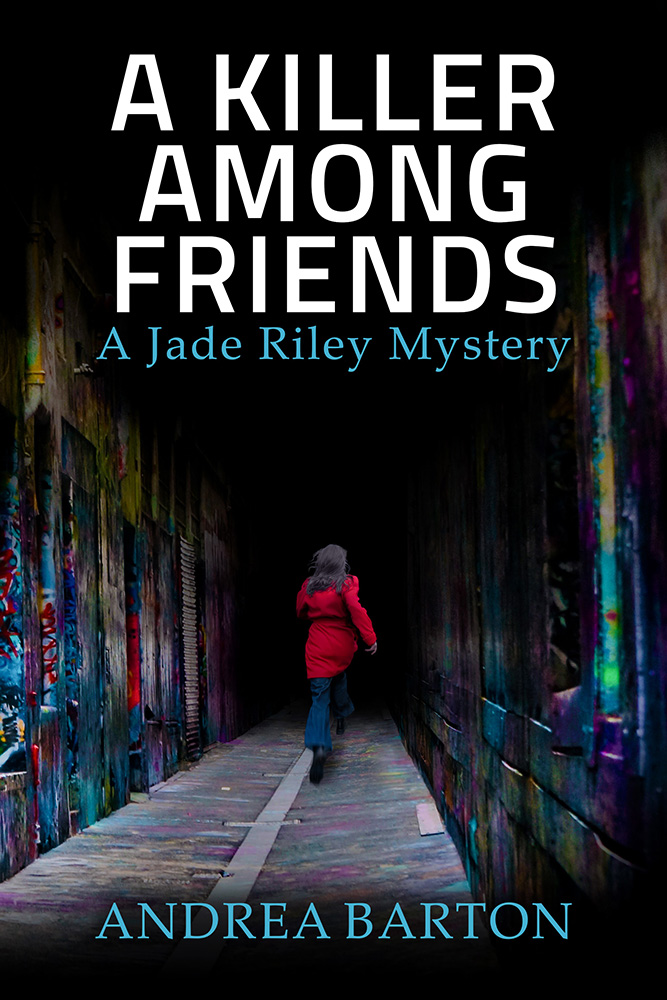I love nothing more than curling up with a murder mystery, racing through the pages to unveil the killer. When I became serious about writing a novel, I longed to create that read-until-the-wee-hours experience for others. It took me over a decade of detours and wrong turns to finally publish my debut novel, but I now have a series. To help others shortcut this process, here are my 5 top tips for plotting a murder mystery.
- Make the protagonist dynamic
Usually, the protagonist is the person solving the crime. Depending on the subgenre – police procedural, spy thriller, cosy mystery, domestic noir or other – this could be a police detective, a spy, a private investigator, the local busy-body or a journalist, like my protagonist, Jade Riley. Whatever your choice, they must have agency to investigate the crime. If you’re planning a series, this agency must span multiple crimes, which is logical for a career investigator like a police detective, but can feel contrived for an amateur sleuth. When I first wrote Jade’s character, she was a psychologist, but I changed her to become a journalist, so it felt more natural for her to be drawn into investigating various cases.
Like any well-developed character, the protagonist must have a multidimensional personality with quirks and flaws. The term ‘likeable’ is often thrown around, but that can be limiting as ‘unlikeable’ traits can make for a more believable and interesting protagonist. For example, an alcoholic divorced detective has become a trope because the character has internal demons to overcome as well as external ones.
We must understand their view of morality, as that impacts their attitude to the crime. It also helps to give them some personal connection to the crime – perhaps they know the victim or suspects, or someone they know has experienced a similar fate.
Throughout the book, we want to see the protagonist learn or grow in some way. For a series, the character should have a character arc for each book as well as a series arc, although you will find plenty of examples, such as Agatha Christie’s books, where the protagonist is more static.
In book one of my series, The Godfather of Dance, for example, Jade wrestles with grief over her best friend’s suicide. This drives her to solve the murder of her dance instructor’s fiancée because she understands the despair of not knowing what caused a loved one’s death. But her determination leads her to take unnecessary risks, putting her and others in danger.
2. Know your victim
A feature of the genre is that the murder usually happens in the first chapter or two, which means the victim can have very little page time. Nevertheless, the author must have a deep understanding of the deceased – who they are and what led to them being killed – and they must find ways to reveal relevant parts of that information to the reader, through flashbacks, other characters’ insight or some other clever device.
The victim can be ‘likeable’ or not. In fact, a detestable victim can work well as it gives the opportunity to explore grey areas of morality by making the murderer’s motivations more understandable, if not forgivable. Conversely, if the victim is loved and admired, the emotional impact of their death can be more profound. Either way, the victim, like the protagonist, should be a well-rounded, believable character. We should get to know the web of the victim’s contacts, because most killers are known to their victim, which leads us to…
3. Be creative with your suspects
The key to writing great suspects is to make their motives believable. Motives can be personal, like jealousy or revenge; business – to increase power or finances; or pathological, as in the case of serial killers who murder for the thrill of it. Don’t forget accidental deaths or covering up another crime. The relationship between the victim and suspect dictates what sort of motives will be in play. The intimate partner, for example, is almost always a key suspect for any number of personal motives or inheritance. Business associates could have power or succession motives.
The relationships between the suspects adds complexity and layers. Often suspects, while claiming innocence and providing an alibi, point the finger at one of the other suspects. The investigator may get their best leads from the other suspects. They will also get misdirects and red herrings, a delicious web of clues to be untangled.
One of these suspects is our antagonist, and we need to know them well enough to understand what really happened. Are they an unredeemable psychopath, a vigilante or a good person who took a wrong turn? The possibilities are endless, just steer clear of making them a caricature.
4. Don’t forget to have subplots
In crime fiction, the main story is the mystery, a giant puzzle. Subplots usually involve the protagonist’s personal life, but it could be any secondary story that adds emotional texture and/or depth to the novel.
Subplots have the greatest impact when they are closely interwoven with the mystery. For example, the detective is having an affair with one of the suspects, or the detective’s prickly relationship with their children or ex are tested to the limit because they’re placed in grave danger due to the investigation.
It’s also important to get the balance right so the B-story doesn’t take over. You don’t want to create genre confusion by writing, for example, a full-blown romance, although you could touch on the main romance beats.
5. Be open to change
It is common to divide writers into plotters, those who plan their entire novel before they begin and pantsers, those who ‘fly by the seat of their pants’ and make it up as they go along. But the (writing) reality is less binary. Most of us are actually plansters – we do some planning and also improvise. I am in this third category, and my best plot twists come when I remain flexible, open to changing my plan, if not in the first draft then in subsequent edits.
I often find characters reveal more of themselves to me as I write, so I might add in they’ve had a secret lover, a volatile temper or have been involved in government corruption, which makes them a more viable suspect. Someone might come forward to give the lead suspect a water-tight alibi or a less-conspicuous suspect might reveal a link to the victim that strengthens their motive.
The themes, too, often evolve or strengthen as I write. In A Killer Among Friends, the theme of hidden dangers within close friendships developed as Jade uncovered dark secrets about her friends. Through her, I could address questions such as: What if someone you knew was a criminal? Would it make you question your judgement of human nature? How would it impact your ability to trust others?
If your plotted story’s feeling pedestrian, mix things up. Make the protagonist an unreliable narrator who is involved beyond what they have explained. Change the killer to someone different and see if you can make it work. Throw in a second murder or another type of crime. Highlight a social justice issue. Find something that keeps you interested. At the end of the day, you’re writing to entertain, to offer insight to human behaviour and to engage your readers’ emotions. To do that, you need to be similarly engaged. If you’re bored writing, chances are, your reader will be too. Have a solid plan involving characters who feel real, then keep it fresh, be flexible, and above all, enjoy the process.
Andrea, author of The Godfather of Dance, A Jade Riley Mystery, runs Brightside Story Studio, a book editing company. She also writes The Winding Narrative blog, short stories, stage productions and picture books. An engineer turned career consultant, Andrea spent 12 years enjoying the exhilaration and dislocation of expat life in Nigeria, USA and Qatar. Now in Australia, she commutes between Melbourne and Mansfield. Along the way, she developed a passion for ballroom and Latin dance, helped to build a school, got bogged in both the Doha and Australian deserts and had an accidental hallucinogenic experience in Peru.



Leave a Reply